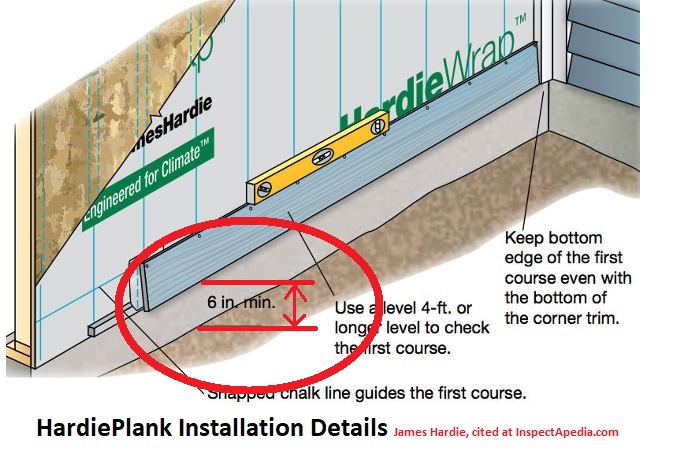Nail a piece of plywood about 3 5 inches 89 mm thick along the top of the chalk line this will hold out the bottom of the first row of siding.
How high to start first course of siding.
The walls should be stripped of all previous siding and the surface should be fairly smooth and flat because lap siding will follow along any contours.
Add approximately 1 4 6 4mm to both sides to allow for expansion and contraction of the siding.
From the top of this row and stretch a string line across the deck.
Vinyl siding starter strips snap a level chalk line for the first starter strip at the base of the wall no less than 8 inches above ground level after determining the lowest corner of the house.
Generally a starter piece is installed underneath the first course to simulate the typical overlap and to orient the panel at the proper angle.
Lock a small piece of scrap siding into the lower panel next to the window.
This chalk line should be level and a consistent distance from the eaves or the top and bottom of the windows.
The method discussed here is an easier and more common one installing corner trim first and then butting the siding to it.
To provide a common reference point measure up 8 in.
Use a table saw to rip a 1 wide strip of the siding.
Nail the cut off shingle into place about 6 inches from its lower edge.
This will be used as a template for the horizontal cuts.
Make sure to keep nails out of the tar strip as you work.
This is where the new siding will begin.
These marks represent the vertical cuts fig.
This project is using an 8 wide siding with a 1 overlap resulting in a 7 reveal.
Begin by installing the first row of siding on both sides of the deck.
Most suppliers sell two sizes of starter 2 1 2 in.
Hammer in one nail about 2 inches from each end of each shingle and another nail about 1 inch above each cutout.
Spend the extra few bucks on the wider stuff and start your siding a bit lower.




























